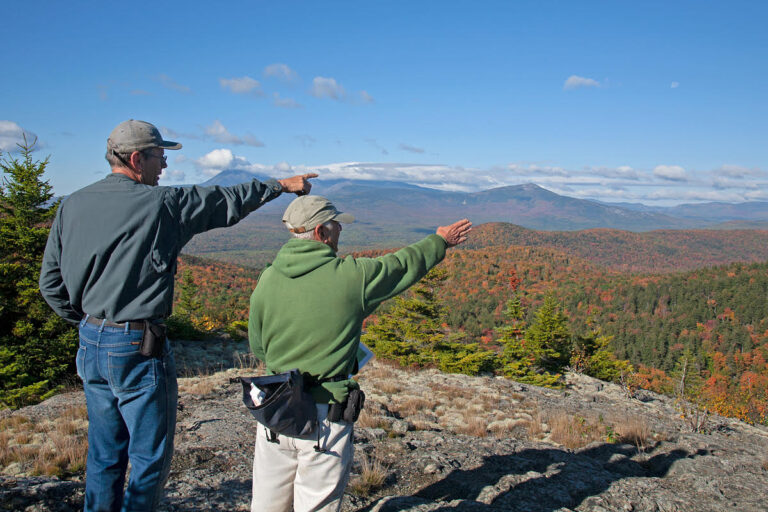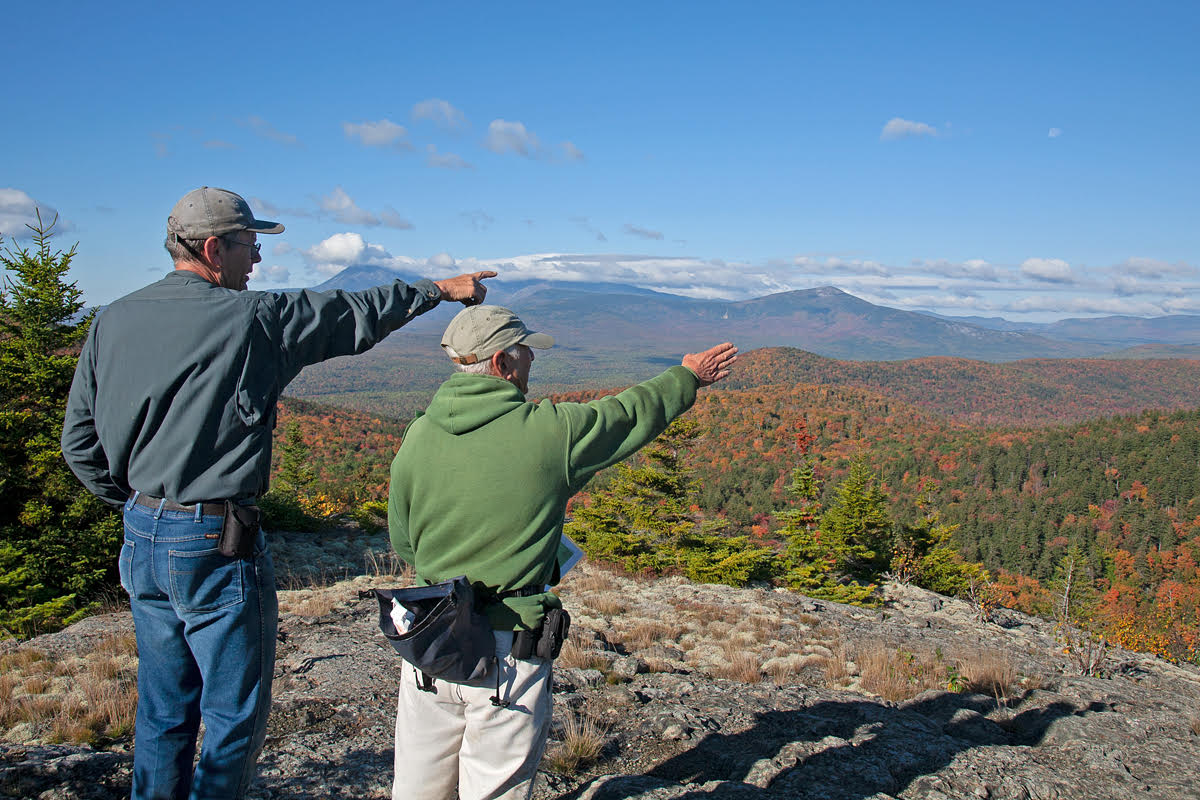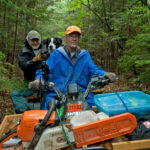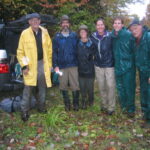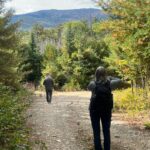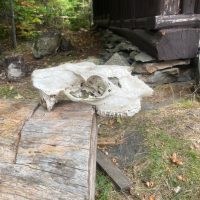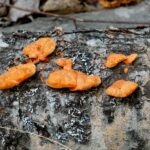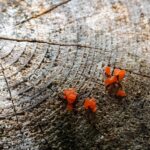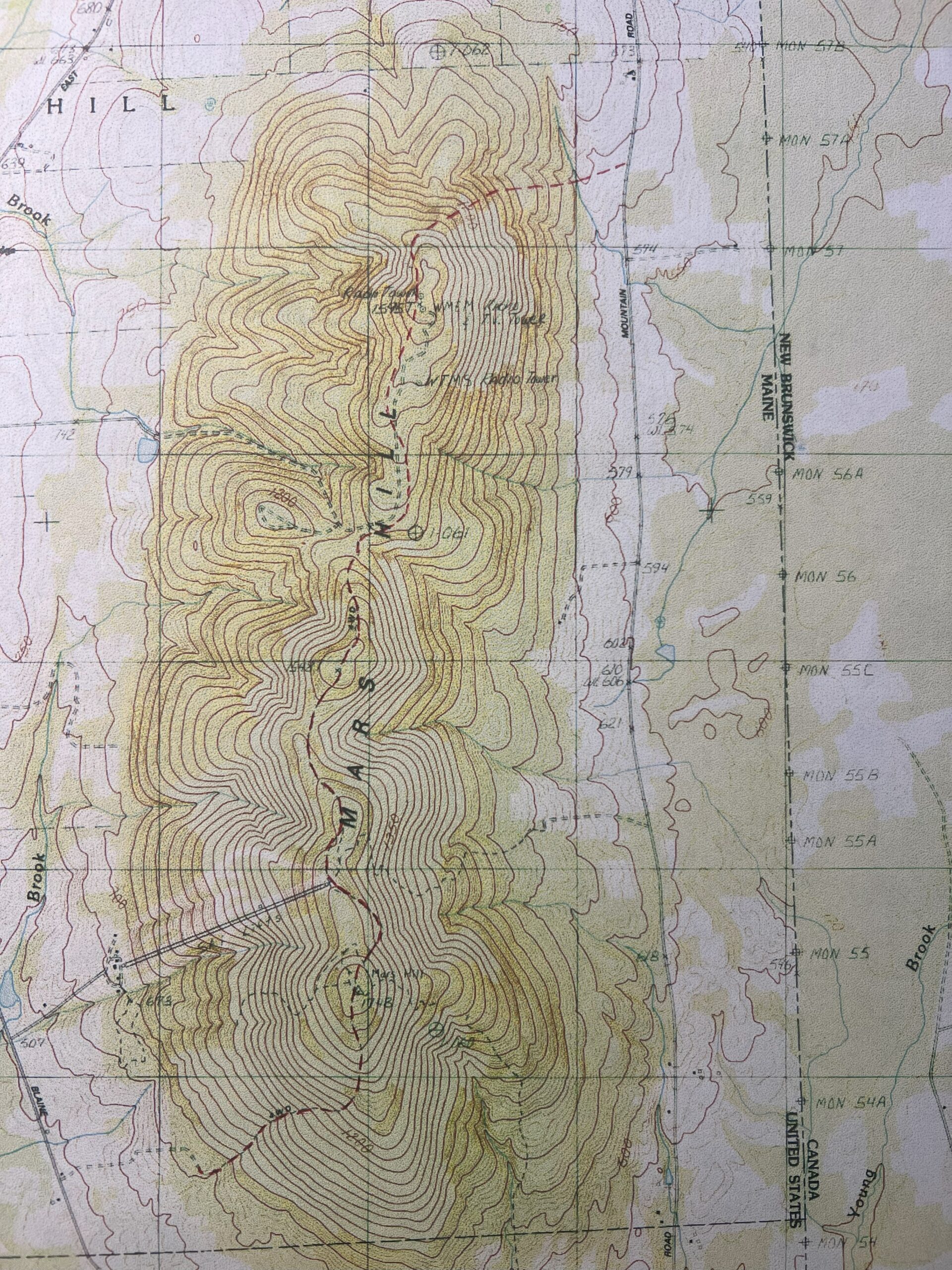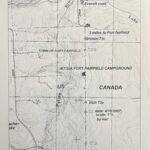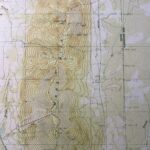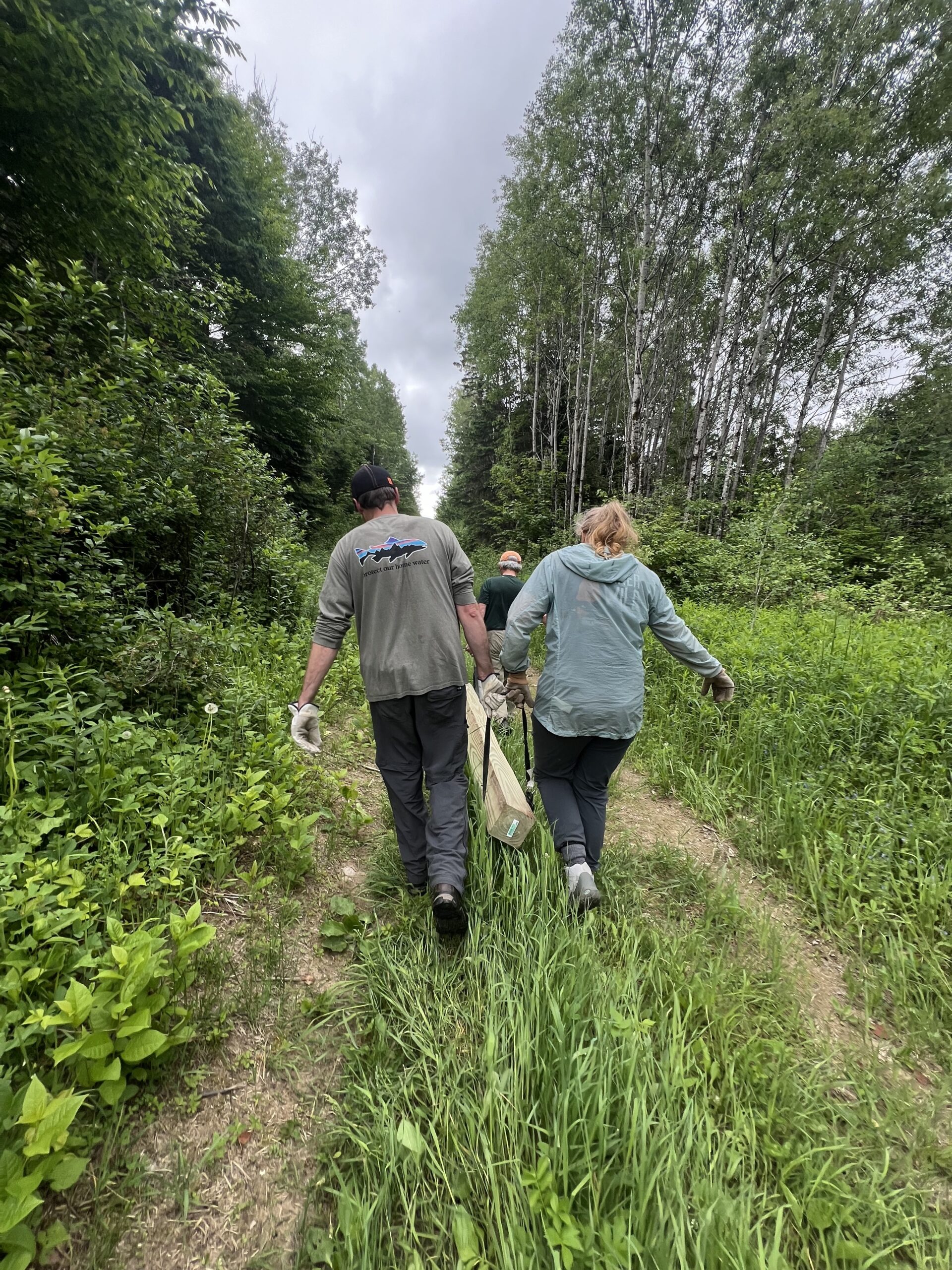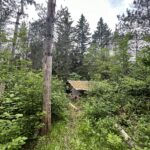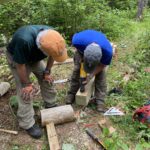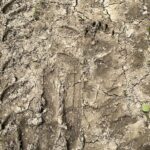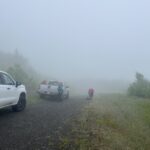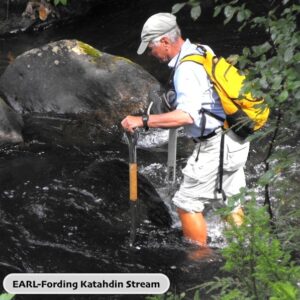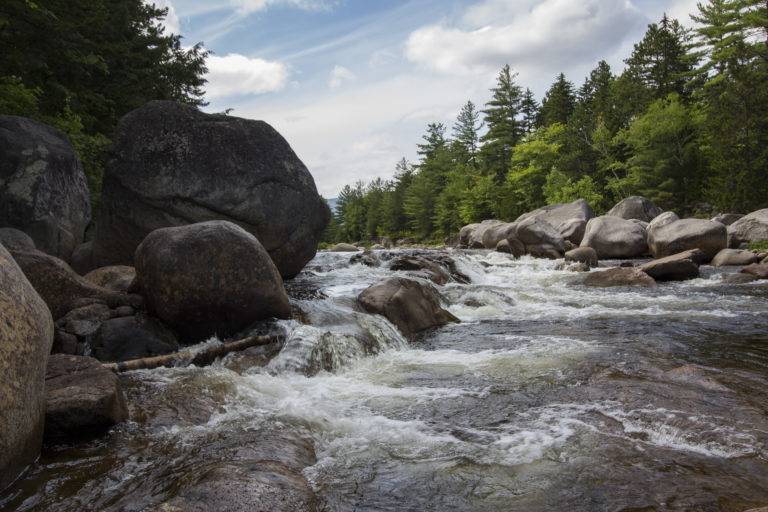The questions about hiking the IAT started coming early in the fall of 2016; questions about transportation, trail conditions in Maine, contacts for hiker information in Canada, and all the routes around the North Atlantic.

Denali, Don Hudson, Wuss
No one had proposed to walk the entire International Appalachian Trail, from the southeastern geographical high point of Flagg Mountain, Alabama, to the town of Taroudant, Morocco before Anne Conover reached out to us to learn more about the trail. Originally from Texas, Anne was teaching science in South Dakota when the IAT came across her screen. Something in the description of the trail, its origin and geologic underpinnings, and outlandish vision caught her attention. During one back and forth between Dick Anderson and Don Hudson, while discussing Anne’s plans to include some tall ship sailing to make connections between the trail in North America and the trail in Europe, the trail name of ‘Sail Away’ for Anne popped into Don’s head, and Anne accepted it enthusiastically. Plans were hatched to begin hiking north from Flagg Mountain as soon as possible after the end of the school year.
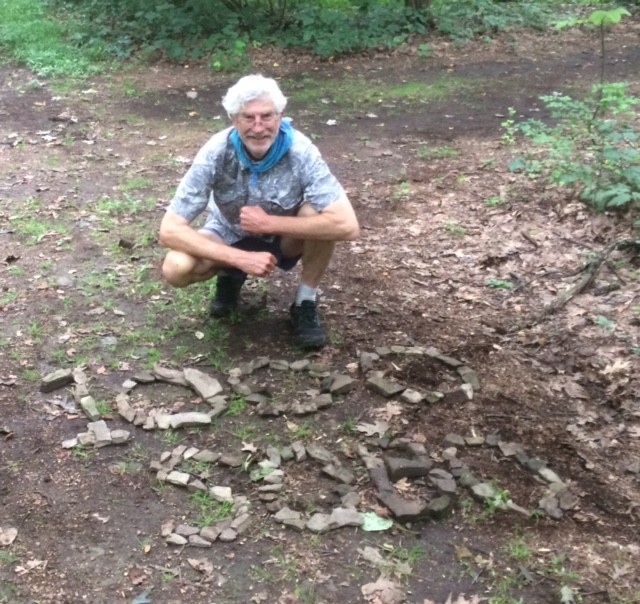
Scout
Barney ‘Scout’ Mann reached out to the Appalachian Trail Conservancy in the late winter with a request for help in promoting his new book about the Pacific Crest Trail (PCT). Barney was planning a southbound hike on the Maine section of the IAT as well as the AT, and he proposed a presentation and book signing for "someplace in Portland, Maine" in late May, just before heading out on his walk. Hawk Metheny at the northeast office of the AT in western Massachusetts put Barney in touch with Dick and Don, and they quickly added Seth Levy to the ad hoc committee charged with finding a venue for the book PCT.
Faith ‘Wuss’ McClure got in touch with Carol Gay in the IAT office in December with questions about the IAT in Maine and the connection to the AT through Baxter State Park. Faith had never done anything like this before, but she was planning to do a southbound hike of the Eastern Continental Trail from the Maine/New Brunswick border to her home state of Florida. Faith’s questions came just at the time that the Baxter State Park Authority closed the Katahdin Lake East gate used by the IAT to get from the new national monument into Avalanche Field in Baxter. We hemmed and hawed, and promised Faith that we’d have answers for her by the time in late May that she intended to start walking south.
Later in the winter, we first heard from Mary ‘Denali McKinley who was planning to walk the IAT from Maine to Cap Gaspé, Quebec during her free summer (Mary is a math prof) as part of her section-hike of the entire Eastern Continental Trail. Mary had already walked all but the southern-most 100 miles of the ECT in Florida between Florida and Maine, and she was ready to begin to put the IAT behind her. Just as with Barney and Faith, our exchanges focused on how to get from the trail into Baxter now that the longstanding route past Katahdin Lake was temporarily blocked.
As this newsletter goes to press, we can report that all of these great hikes are on track or have been successfully completed.

Sail Away
Sail Away is well on her way north, having taken a well-deserved day off to visit in farm in Asheville, North Carolina. Her brother walked with her for the first stretch, and now she’s heading north on the AT. She’ll make her way to the White Mountains of New Hampshire this fall, and stop for the winter season to earn some money and continue to plan for the trail ahead. The current plan is to complete the entire trail in four years — a challenging and inspiring goal. You can follow Sail Away’s progress at her blog – https://iatsailaway.wordpress.com.
By now, Scout, is likely walking in Maryland or West Virginia, on his way to Springer Mountain and the end of his summer’s walk on October 20th. You can follow him here – http://www.trailjournals.com/mann3. Scout makes a point to provide up to date information about trail conditions in his blog entries, and his early entries about the IAT in Maine are no exception. This kind of reporting is essential for those of us who maintain the trail.
One of the joys of working on the IAT in Maine is the opportunity to interact with the hiking community, a rich and varied collection of individuals. Half of the group presented here are southbounders (SOBOs) on the IAT. Cheryl and Kirk St. Peter stepped right up to job of ‘Trail Angels’ and helped Scout and Wuss, as well as ‘RT’ — a third SOBO who showed up serendipitously as Cheryl and Kirk were dropping off Scout in Fort Fairfield. Cheryl’s note of a few days later says it all:
5/31 – From Cheryl
Hi Scout!
First, so sorry about the tick! Really, Kirk didn’t think we had any this far north, since we’ve never encountered any or heard of anyone encountering any (until now). Also, sorry about the bogs – glad you found that a highlight. We actually followed the ATV path when it veered off the border trail when we hiked in 2010.
Second, the road walk from Shin Pond to Matagamon is not a typical road walk, since it’s all through the woods with no houses – very pleasant, actually. FYI, a really nice place to take a break is at Hay Lake; it’s worth a stop.
Third, we’ve been reading both journal entries – yours and RT’s – great entries and photos – thanks!
Attached is the story that I finally had a chance to write up for our website. Let me know if you see anything you’d like to change before we post it.
Good luck with the rest of your hike!
Cheryl (& Kirk)
P.S. Did you ever meet up with Faith “Wuss” McClure at Brookside? I wonder how she’s doing?
What about Wuss?!
When Mary ‘Denali’ McKinley got in touch to tell us that she was arriving in Portland on June 9th, Dick and Don decided to meet with her before she headed out on the trail. The connections by bus from Portland to Millinocket consume most of a day, so Don offered to drop Denali at the Mile #12 starting point of the IAT in Katahdin Woods & Waters National Monument the next day. As Don and Denali arrived at the drop-off point on the Loop Road in the monument, out of the woods walked Wuss. After dropping Denali’s pack in the Katahdin Brook lean-to, Don dropped her at the old Katahdin Lake East path before ferrying Wuss to the AT Lodge in Millinocket.
As Denali headed north, Wuss headed south. When Don reported to Denali in late July that Wuss had taken a well-deserved week off to rest her knees, she proposed that we change Wuss’s trail name to No Wuss. And, it’s done! While Denali wrapped up her hike at Cap Gaspé on August 13th, No Wuss was heading into Massachusetts on her way south. No Wuss has elected to by pass the Mahoosucs and the White Mountains until her legs are stronger and her knees more resilient.
The stories of long distance hikers put trails such as the IAT on the map. We have no idea how many people have walked the IAT in Maine or the complete trail in Canada, yet we are confident that the story of John Brinda’s walk in 1997 inspired Nimblewill Nomad — Eb Eberhart — to walk from Key West to Belle Isle.
The four stories shared here are just a handful of stories from the IAT this summer, and they will no doubt inspire others to get out on the trail in the coming months and years.
A walk in the woods is never truly a solitary experience!
